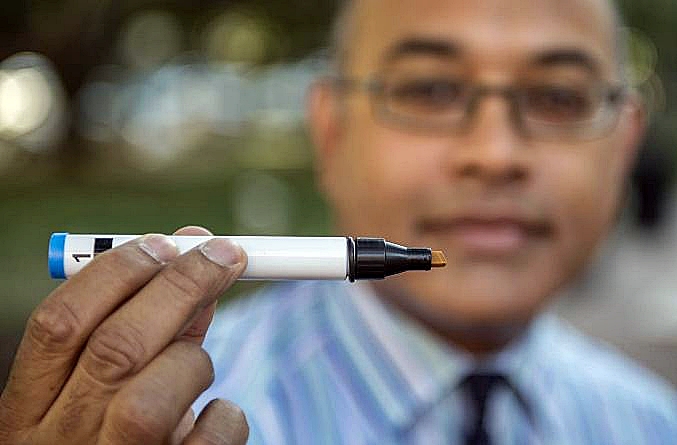Arthur J. Villasanta – Fourth Estate Contributor
Chicago, IL, United States (4E) – Elderly citizens that can’t identify at least four of five common odors are more than twice as likely as those with a normal sense of smell to develop dementia within five years.
This was one of the findings in a long-term study of nearly 3,000 adults, aged 57 to 85, conducted by a team from the University of Chicago. The study, “Olfactory Dysfunction Predicts Subsequent Dementia in Older US Adults,” was published this September in the Journal of the American Geriatrics Society.
The study shows that while 78 percent of those tested were normal (or those that correctly identified at least four out of five scents), about 14 percent could name just three out of five; five percent could identify only two scents; two percent could name just one, and one percent were unable to identify a single smell.
Five years after the initial test, almost all of the study subjects unable to name a single scent had been diagnosed with dementia.
Nearly 80 percent of those that provided only one or two correct answers also had dementia, with a dose-dependent relationship between degree of smell loss and incidence of dementia.
“These results show that the sense of smell is closely connected with brain function and health,” said the study’s lead author, Dr. Jayant M. Pinto, MD, a professor of surgery at the University of Chicago and ENT specialist who studies the genetics and treatment of olfactory and sinus disease.
“Loss of the sense of smell is a strong signal that something has gone wrong and significant damage has been done. This simple smell test could provide a quick and inexpensive way to identify those who are already at high risk.”
The study follows a related 2014 paper in which olfactory dysfunction was associated with increased risk of death within five years. In that study, loss of the sense of smell was a better predictor of death than a diagnosis of heart failure, cancer or lung disease.
For both studies, researchers used a well-validated tool, known as “Sniffin’Sticks.”
These look like a felt-tip pen, but instead of ink are infused with distinct scents. Study subjects smell each item and are asked to identify that odor, one at a time, from a set of four choices.
The five odors, in order of increasing difficulty, were peppermint, fish, orange, rose and leather.
Test results showed that:
* 78.1 percent of those examined had a normal sense of smell; 48.7 percent correctly identified five out of five odors and 29.4 percent identified four out of five.
* 18.7 percent, considered “hyposmic,” got two or three out of five correct.
* The remaining 3.2 percent, labeled “anosmic,” could identify just one of the five scents (2.2%), or none (1%).
The olfactory nerve is the only cranial nerve directly exposed to the environment. The cells that detect smells connect directly with the olfactory bulb at the base of the brain, potentially exposing the central nervous system to environmental hazards such as pollution or pathogens.
Olfactory deficits are often an early sign of Parkinson’s or Alzheimer’s disease. They get worse with disease progression.
“Of all human senses, smell is the most undervalued and underappreciated – until it’s gone,” said Dr. Pinto.
Article – All Rights Reserved.
Provided by FeedSyndicate





















